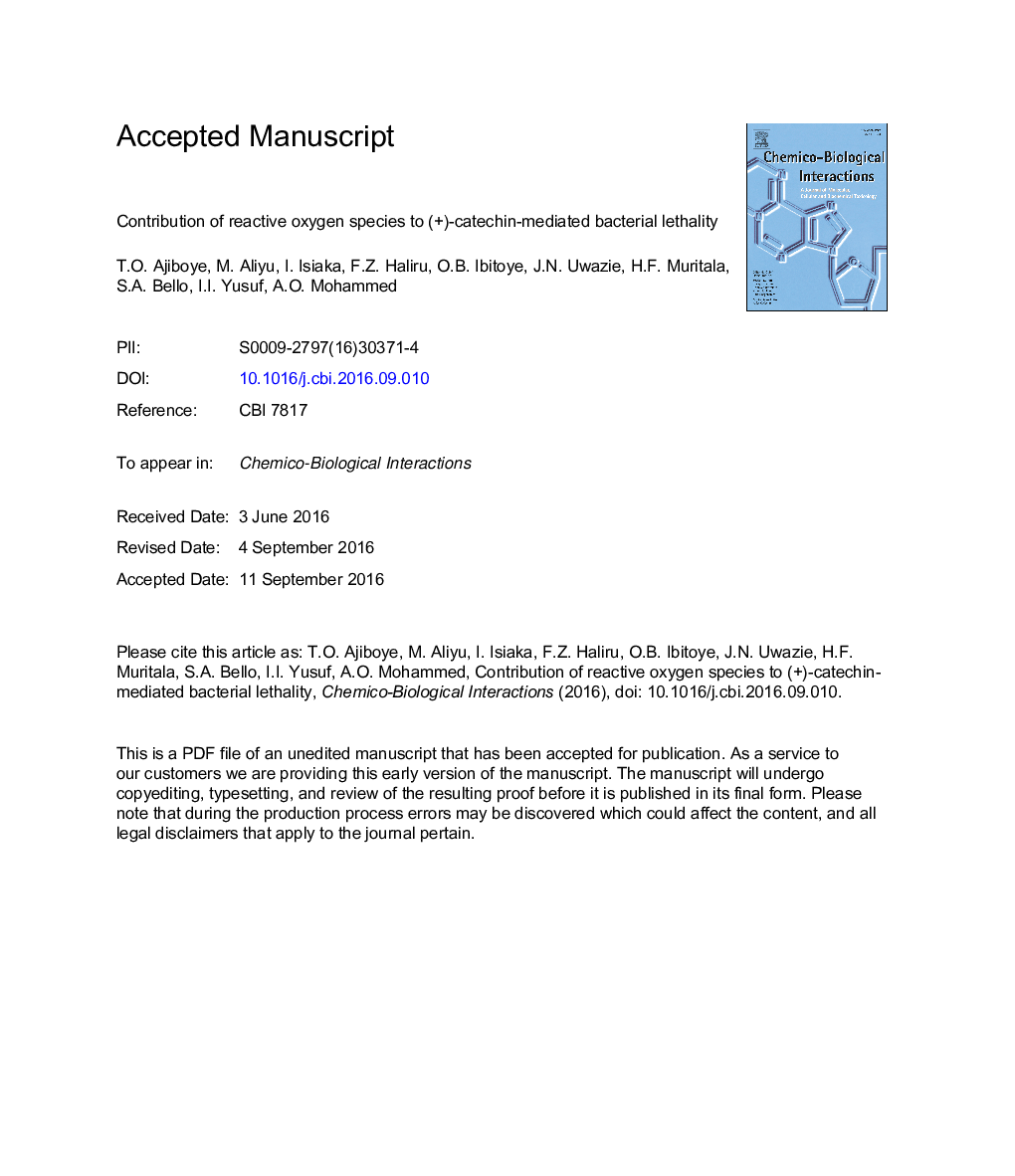| Article ID | Journal | Published Year | Pages | File Type |
|---|---|---|---|---|
| 8545671 | Chemico-Biological Interactions | 2016 | 48 Pages |
Abstract
The contribution of reactive oxygen species to (+)-catechin-mediated bacterial lethality was investigated. Minimum inhibitory concentrations (MIC) and minimum bactericidal concentration (MBC) of (+)-catechin against E. coli, P. aeruginosa and S. aureus were investigated using 96-well microtitre plate. MIC and MBC of (+)-catechin against E. coli, P. aeruginosa and S. aureus are 600 and 700; 600 and 800; 600 and 800 μg/mL respectively. The optical densities and colony forming units of (+)-catechin-treated bacteria decreased. (+)-Catechin (4à MIC) significantly increased the superoxide anion content of E. coli, P. aeruginosa and S. aureus compared to DMSO. Superoxide dismutase and catalase in (+)-catechin treated E. coli, P. aeruginosa and S. aureus increased significantly. Conversely, level of reduced glutathione in (+)-catechin-treated E. coli, P. aeruginosa and S. aureus decreased significantly while glutathione disulfide increased significantly. Furthermore, malondialdehyde and fragmented DNA increased significantly following exposure to (+)-catechin. From the above findings, (+)-catechin enhanced the generation of reactive oxygen species (superoxide anion radical and hydroxyl radical) in E. coli, P. aeruginosa and S. aureus, possibly by autoxidation, Fenton chemistry and inhibiting electron transport chain resulting into lipid peroxidation and DNA fragmentation and consequentially bacterial cell death.
Related Topics
Life Sciences
Environmental Science
Health, Toxicology and Mutagenesis
Authors
T.O. Ajiboye, M. Aliyu, I. Isiaka, F.Z. Haliru, O.B. Ibitoye, J.N. Uwazie, H.F. Muritala, S.A. Bello, I.I. Yusuf, A.O. Mohammed,
